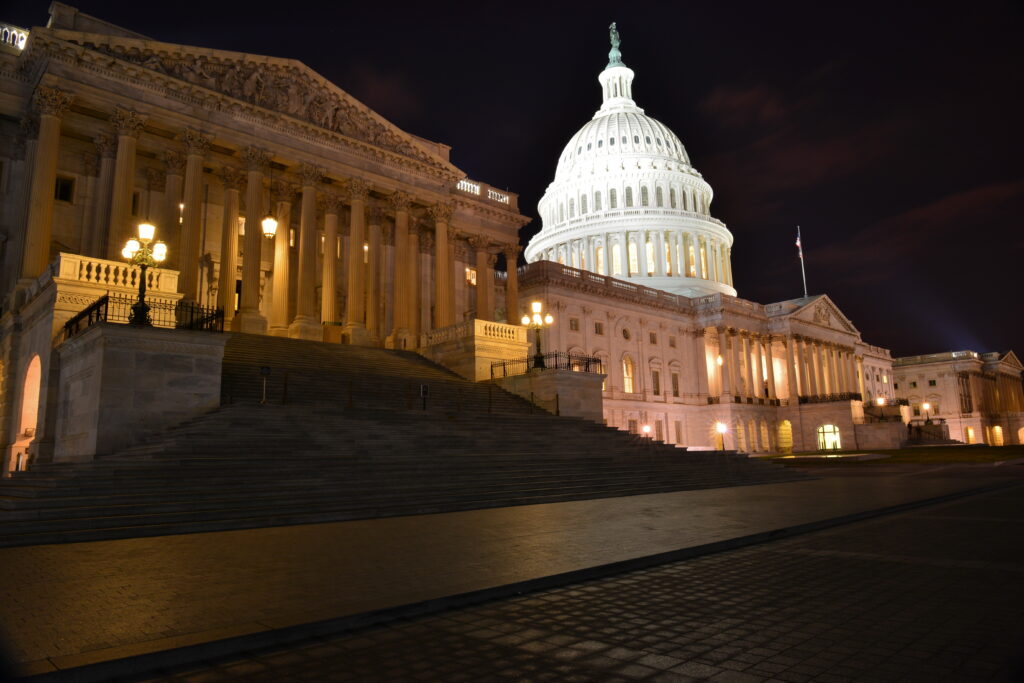
Goodbye Shutdown, Hello Funding
Well, it’s what we’ve all been waiting for… In a late-night move last Wednesday, Nov. 12, President Trump signed the Continuing Appropriations Act (CAA) of

By now you have likely heard about Congress moving the “One Big Beautiful Bill” over the past few weeks to fulfill President Trump’s desire to sign the legislation into law by the July 4th holiday weekend.
The sweeping budget reconciliation package was indeed finalized last week and signed by the President last Friday. Critics have since called it the largest cut to the social safety net in history, noting that it adds an estimated $2.4-2.8 trillion to the federal deficit by 2034.
Though celebrated by Republicans for its inclusion of permanent tax cuts and border measures, it also implements massive reductions to Medicaid – up to $1 trillion over the next decade – and introduces new eligibility rules. Additionally, the Congressional Budget Office, or CBO, estimates that the bill could cause approximately 11-12 million Americans to lose Medicaid coverage by 2034, creating an influx of uninsured individuals that surge emergency-room (ER) usage rates and care delays.
Due to its huge size and scope, it’s easy for some of the bill’s broader Medicaid implications to get lost in the shuffle, so let’s review the bill’s key Medicaid provisions and consider how they will impact beneficiaries and providers, as well as the broader political and economic setting.
Starting Dec. 31, 2026, adults aged 19-64 without dependents must complete 80 hours a month of work, volunteering, education, or training to remain Medicaid-eligible, with states having the option to impose stricter work or community engagement requirements if desired.
Also beginning December 2026, eligibility checks, a.k.a. redeterminations, will become more frequent, shifting from annually to every six months for Medicaid expansion enrollees. This may increase administrative burdens and risks fueling “churn,” or unintentional coverage losses.
Meanwhile, the bill introduces mandatory cost-sharing for beneficiaries, requiring individuals with incomes between 100-138 percent of the federal poverty level (FPL) to begin contributing up to $35 per service, effective Oct. 1, 2028. It also reduces by 10 percent the federal matching dollars states receive from the feds for Medicaid expansion benefits for non-U.S. citizens starting in 2028, and requires green-card holders to wait five years before they can gain Medicaid eligibility.
Medicaid providers and health systems will likely face new pressures in rural and safety‑net areas, with rural hospitals being particularly vulnerable. Though the bill allocates over $25 billion over five years for rural hospitals, analysts at the Urban Institute argue that money is insufficient to offset far more billions of dollars in cuts, which are projected at $321 billion in hospital losses and $63 billion in uncompensated care.
Nursing homes and long‑term care facilities are also likely to feel some strain as the bill reduces retroactive Medicaid eligibility from 90 days to 30, limiting reimbursement for long-term care providers, and potentially forcing closures or downsizing at these facilities. The Government Accountability Office (GAO) suggests that nursing-home closures in particular will overload hospitals, increase ER wait times, and potentially result in higher mortality rates.
In addition to impacts on beneficiaries and providers, keep in mind that states must now build databases to meet new Social Security Number (SSN) verification requirements, quarterly cross-state eligibility screens, and death registry checks, adding new layers of complexity, administrative burden, and implementation costs to their Medicaid programs.
The “Big Beautiful Bill” undoubtedly marks a major shift in Medicaid: from expanding administrative oversight of eligibility, to linking benefits to work or service, to tightening access, to cutting provider funding and driving service cuts.
For beneficiaries, it likely means enrollment complications, potential loss of care, and a heavier overall cost burden. According to some lawmakers, however, the bill was needed to save significant costs and gives patients more flexibility in how they spend healthcare dollars by expanding on health savings accounts (HSAs) to reduce medical expenses.
As states ramp up to comply, Medicaid enrollment – and the access it represents – are expected to decline sharply, with consequences rippling through the broader healthcare system.
So, as I say most weeks: stay tuned, because there is much we need to watch as these repercussions unfold.
Reference material


Well, it’s what we’ve all been waiting for… In a late-night move last Wednesday, Nov. 12, President Trump signed the Continuing Appropriations Act (CAA) of

Medicare and Medicaid audits differ in process. Yet one thing remains the same, in practice: the administrative process has become so burdensome that many providers
Please log in to your account to comment on this article.

Accurately determining the principal diagnosis is critical for compliant billing, appropriate reimbursement, and valid quality reporting — yet it remains one of the most subjective and error-prone areas in inpatient coding. In this expert-led session, Cheryl Ericson, RN, MS, CCDS, CDIP, demystifies the complexities of principal diagnosis assignment, bridging the gap between coding rules and clinical reality. Learn how to strengthen your organization’s coding accuracy, reduce denials, and ensure your documentation supports true medical necessity.

Denials continue to delay reimbursement, increase administrative burden, and threaten financial stability across healthcare organizations. This essential webcast tackles the root causes—rising payer scrutiny, fragmented workflows, inconsistent documentation, and underused analytics—and offers proven, data-driven strategies to prevent and overturn denials. Attendees will gain practical tools to strengthen documentation and coding accuracy, engage clinicians effectively, and leverage predictive analytics and AI to identify risks before they impact revenue. Through real-world case examples and actionable guidance, this session empowers coding, CDI, and revenue cycle professionals to shift from reactive appeals to proactive denial prevention and revenue protection.

Sepsis remains one of the most frequently denied and contested diagnoses, creating costly revenue loss and compliance risks. In this webcast, Angela Comfort, DBA, MBA, RHIA, CDIP, CCS, CCS-P, provides practical, real-world strategies to align documentation with coding guidelines, reconcile Sepsis-2 and Sepsis-3 definitions, and apply compliant queries. You’ll learn how to identify and address documentation gaps, strengthen provider engagement, and defend diagnoses against payer scrutiny—equipping you to protect reimbursement, improve SOI/ROM capture, and reduce audit vulnerability in this high-risk area.

Only ICD10monitor delivers what you need: updates on must-know changes associated with the FY26 IPPS, including new ICD-10-CM/PCS codes, CCs/MCCs, and MS-DRGs, plus insights, analysis and answers to your questions from two of the country’s most respected subject matter experts.

Get clear, practical answers to Medicare’s most confusing regulations. Join Dr. Ronald Hirsch as he breaks down real-world compliance challenges and shares guidance your team can apply right away.

Federal auditors are zeroing in on Inpatient Rehabilitation Facility (IRF) and hospital rehab unit services, with OIG and CERT audits leading to millions in penalties—often due to documentation and administrative errors, not quality of care. Join compliance expert Michael Calahan, PA, MBA, to learn the five clinical “pillars” of IRF-PPS admissions, key documentation requirements, and real-life case lessons to help protect your revenue.

During this essential RACmonitor webcast Michael Calahan, PA, MBA Certified Compliance Officer, will clarify the rules, dispel common misconceptions, and equip you with practical strategies to code, document, and bill high-risk split/shared, incident-to & critical care E/M services with confidence. Don’t let audit risks or revenue losses catch your organization off guard — learn exactly what federal auditors are looking for and how to ensure your documentation and reporting stand up to scrutiny.

Learn how to navigate the proposed elimination of the Inpatient-Only list. Gain strategies to assess admission status, avoid denials, protect compliance, and address impacts across Medicare and non-Medicare payors. Essential insights for hospitals.
Happy National Doctor’s Day! Learn how to get a complimentary webcast on ‘Decoding Social Admissions’ as a token of our heartfelt appreciation! Click here to learn more →
CYBER WEEK IS HERE! Don’t miss your chance to get 20% off now until Dec. 1 with code CYBER25
CYBER WEEK IS HERE! Don’t miss your chance to get 20% off now until Dec. 2 with code CYBER24